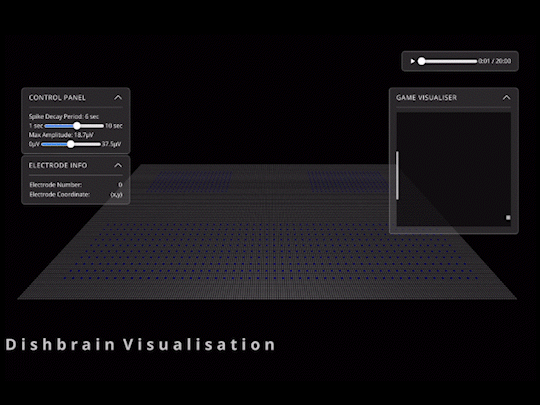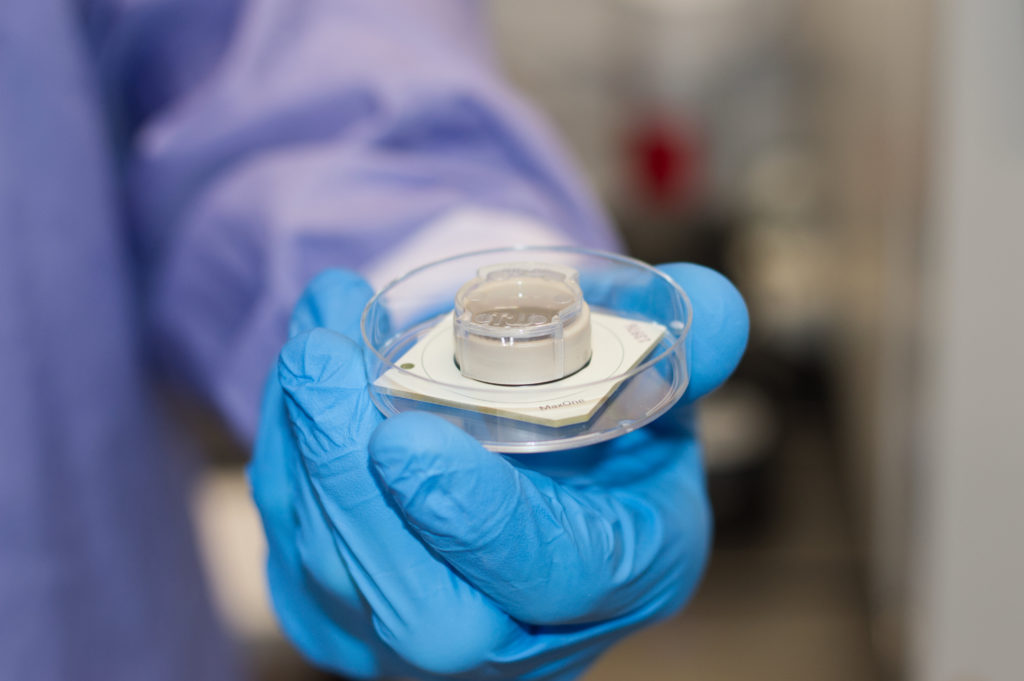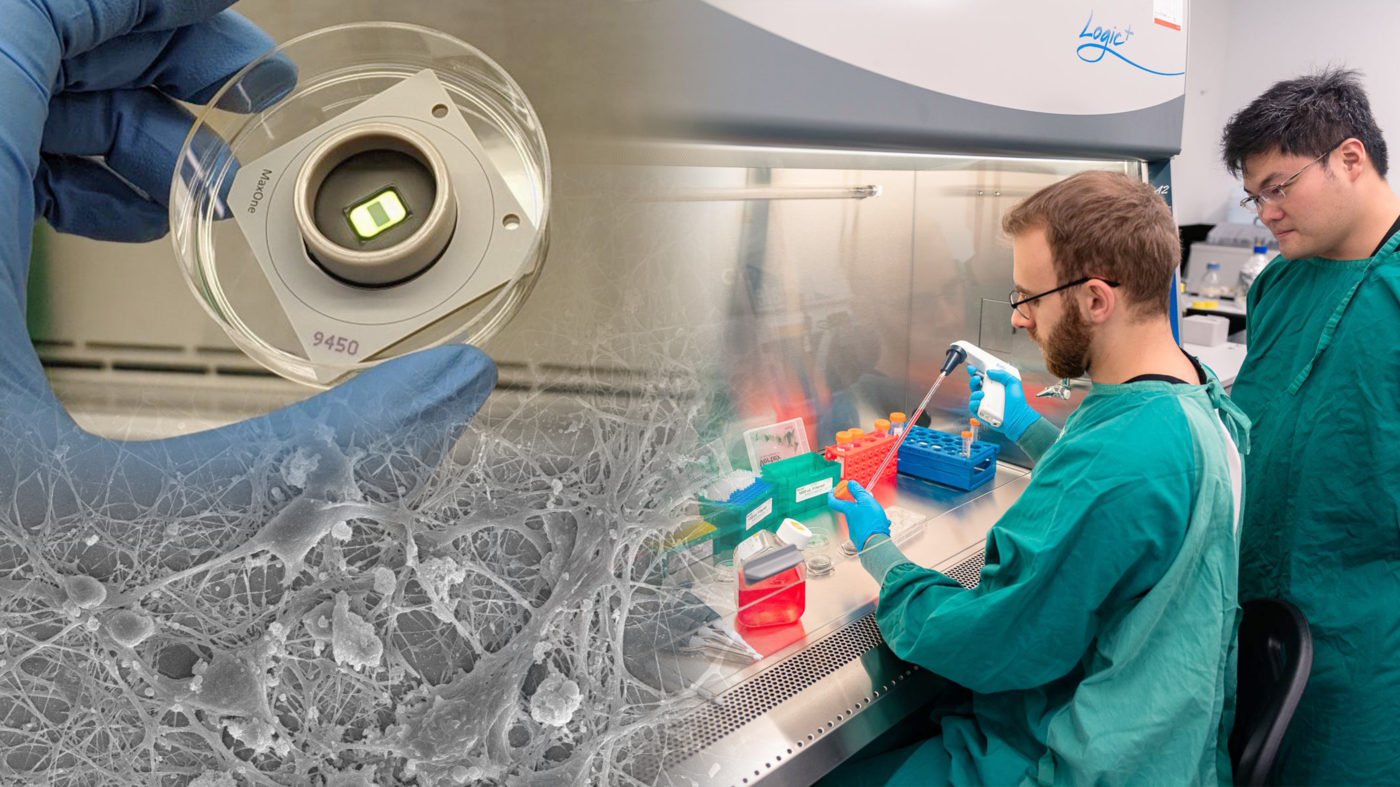
In a groundbreaking new experiment, scientists have managed to grow human brain cells in a lab, and after just a few minutes teach them to play the simple video game Pong. The research paper, intriguingly titled “In vitro neurons learn and exhibit sentience when embodied in a simulated gameworld” details scientists recent advancements in cultivating and understanding human brains. After 3 years of experiments, the scientists at Cortical Labs recently published their findings in the prestigious neuroscience journal “Neuron.”
In the experiment, aptly named DishBrain, the researchers cultured human stem cells in a dish, then connected them to a microchip running Pong. Amazingly, the cells learned how to play the game in less than 15 minutes. Their research showed that lab grow brain cells can observe, predict, and affect their environment. By many definitions this shows it is a living organism, and at least according to the scientists running the experiment, it is sentient.
They call Dishbrain a “synthetic biological intelligence.”
This is a substantial development in our understanding of how the human brain works, and these findings have vast implications for our definition of consciousness, as well as the potential for significant advances in medical technology.
This discovery opens the possibility that we could one day create simplistic ‘lab-grown brains’ that could be used to understand and treat various neurological conditions like Alzheimer’s and Parkinson’s, or even further down the line, make a full-scale human brain.
Randomness as a Motivator
One of the many revealing observations of how the Dishbrain learns to play Pong is its motivation to even play at all.

Unlike training a dog, there are no treats or encouraging words to give the Dishbrain when it wins, so there is seemingly no way to incentivize it to play the game. So why did it choose to play Pong every time they ran this experiment? To understand it’s motivation, you need to know a little bit about Pong, and a little bit about brains.
First, how the Pong ball moves around: When the ball bounces off the paddle, it always goes in a predictable direction, but when the ball hits the wall, it reappears in the center traveling in a random direction.
Second, the human brain operates by sending and receiving electrical signals, always adapting to be operating at peak efficiency. When the brain receives signals in a predictable way, they can easily be utilized, but if it receives signals in an unpredictable way, it requires efforts for the brain cells to respond and adapt.
Therefore, to reduce the amount of effort required, the Dishbrain cells try to prevent the ball from becoming “unpredictable” by hitting the wall. Through trial and error, it learns how to guess where the ball is going and move the paddle to hit it. In less than 15 minutes it becomes proficient without any need for punishment or reward, just a varying amount of predictability.
Implications for life and sentience
This behavior is seen in all life forms. They observe, predict, and act to reduce randomness and operate at peak efficiency. One of the core tenets of what makes a living creature “alive” is its ability to create order from chaos. Every living thing down to a single bacterium is an organized collection of molecules, attempting to retain that organization by controlling its environment to prevent unpredictability and entropy.
In fact, the uniquely effective capability of humans to do this process is in part what has made us so successful as a species. For thousands of years hunter-gathers had to rely on the semi-random location of animals to hunt, and berries to gather. This caused stagnation in their development due to the extra effort required to find them. However, unlike all other animals, humans began to observe and understand how these systems worked. They were able to develop the process of cultivating plants and domesticating animals, increasing the predictability of food sources, and allowing the species to flourish.

Brain in a Jar
What is life? What is sentience? What is artificial intelligence? How is it different from synthetic biological intelligence? These questions are extremely difficult to answer, and they strike at the core of our philosophical beliefs. However, regardless of if you think the Dishbrain is a “living sentient creature,” it is learning and growing right now, today playing Pong, tomorrow playing chess, and after that, who knows? The research is still in its early stages, but it is a hugely exciting development that could change the way we think about life, the brain, and disease.
To stimulate your brain in a dish, consider this:
If you played a game of Pong against Dishbrain, would you win?

